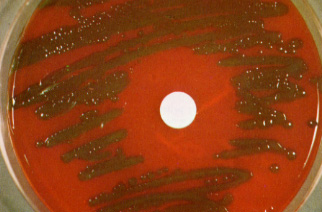Habitat
Typical Habitat
Streptococcus pneumoniae are found world wide within
a variety of organisms such as: primates (like the wild Chimpanzee,
Pan
troglodytes) , some livestock (like pigs,
Sus scofra domestica), and felines (Felis
catus)
(Saunders Comprehensive Veterinary Dictionary, 2007). They are
considered part of the normal flora of upper respiratory bacteria in
humans and are found in the highest concentrations among children,
the elderly, and those with compromised immune systems (Center for
Disease Control, 2013). Streptococcus pneumoniae can typically be
found in the upper respiratory system however, the movement of
Streptococcus pneumoniae most commonly causes conditions such as
pneumonia, conditions such as pneumonia, bacteremia, and
meningitis (Center for Disease Control, 2012, p. 234).
Conditions Effecting Habitat
Streptococcus pneumoniae are aerotolerant (can exist in an
environment with O2) and features an anaerobic metabolism
(therefore, it does not require O2). Streptococcus pneumoniae
however, depends on the organism to provide catalase and peroxidase
for its metabolism which is detailed further in the
nutrition
section. As these colonies age, the organism
loses it’s ability to obtain catalyze and peroxidase because of its
accumulation of hydrogen peroxide over time (Patterson, 1996). These
organisms are typically diplococci (have two cells right next to
each other) however, longer strands have been observed. They are also non-motile which means
they depend on their host organism or other factors for transport
(Todar, 2012, p. 1) .

Figure 1. S. pneumoniae on a blood culture. The
small purple dots are are dyed purple because S. pneumoniae
is a gram positive bacteria. Note how they usually are found in
groups of two within the image.
Image from the Center for Disease control (Miller, 1978)
In Vitro Characteristics
In vitro, Streptococcus pneumoniae grow best on blood agar as
their metabolism requires blood to function properly. These
organisms will grow the best when placed in an environment that
offers a 5% CO2 concentration (Todar, 2012, p.1). On this media,
Streptococcus pneumoniae will exhibit α-hemolysis (in comparison to
β-hemolysis and Ɣ-hemolysis, which have different characteristics).
This particular type of hemolysis produces a greenish tint on the
media formed from incomplete hemolysis of the blood cells (Fox,
2010).

Figure 2. Alpha hemolysis of blood media by
Streptococcus pneumoniae. Used with permission from Dr. Kenneth
Todar's
Textbook of Bacteriology.
Ex Vitro/Pathogenic Characteristics in Respect to Habitat
Ex vitro, in an organism, this bacteria prefers the mucous
membranes of the upper respiratory tract. It is estimated that
anywhere from 5%-70% of healthy adults have Streptococcus pneumoniae
living within their upper respiratory tracts (Center for Disease
Control, 2012, p. 234). The human body in particular provides an a
decent environment for this bacteria as it’s doubling rate is 20-30
minutes in mixed media containing blood that at 37 C (Todar, 2012,
p. 1), which is that average body temperature for a human. Left
unchecked this means that Streptococcus pneumoniae could
theoretically produce almost 16,800,000 new bacteria within 24
hours!
